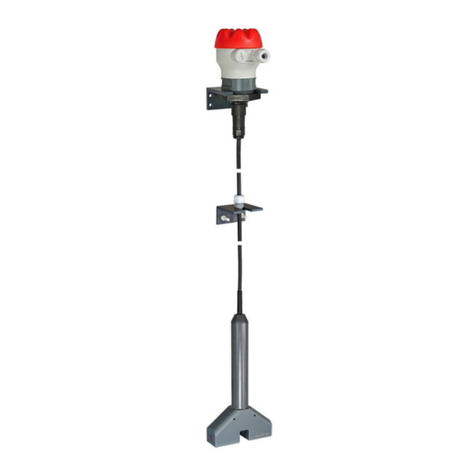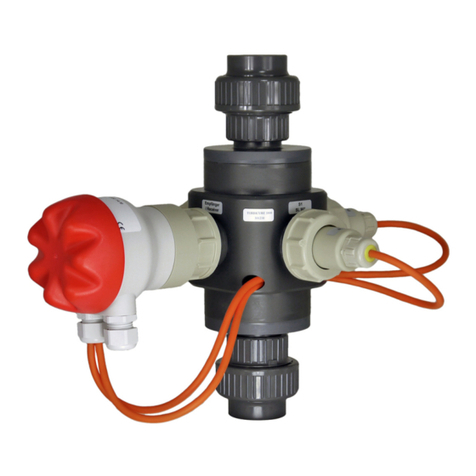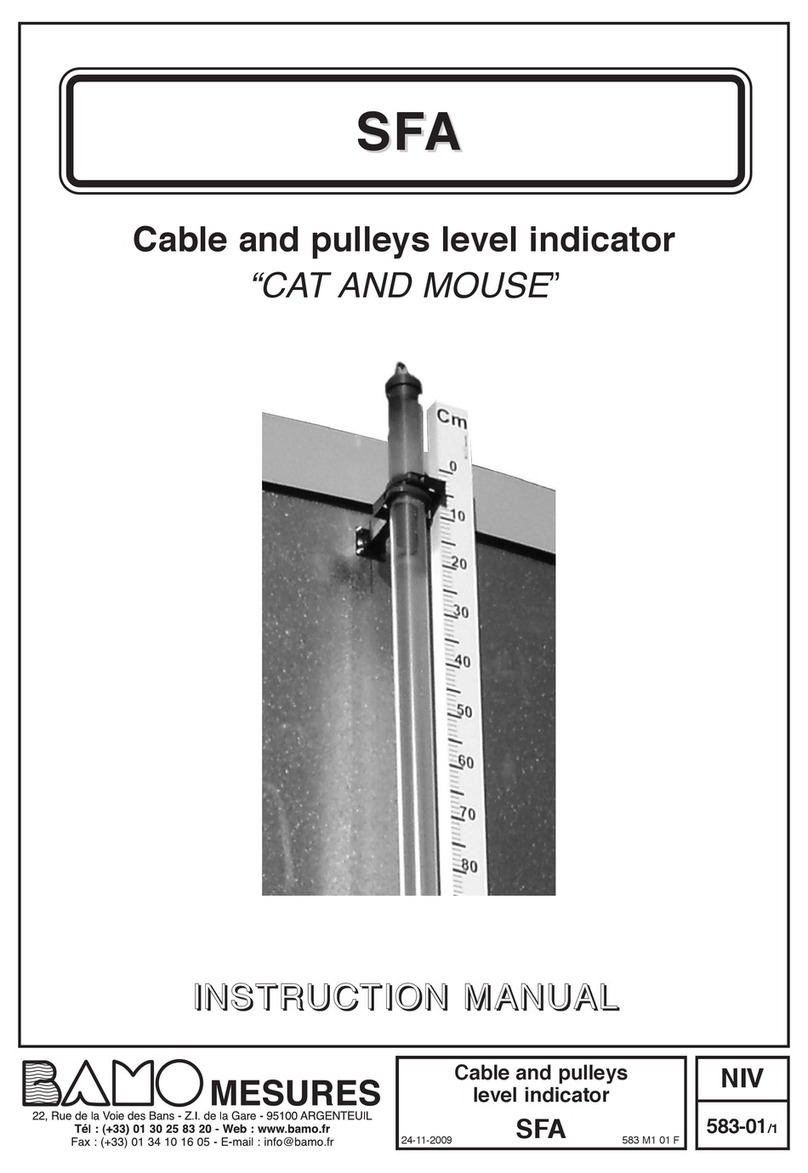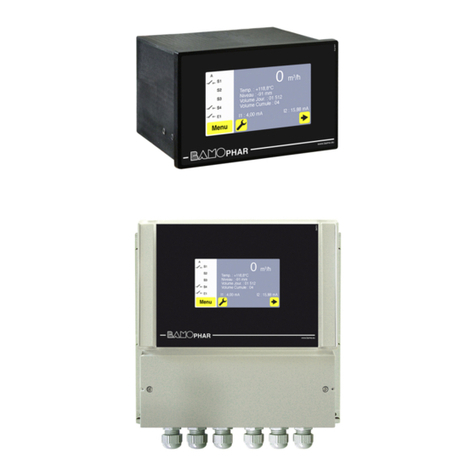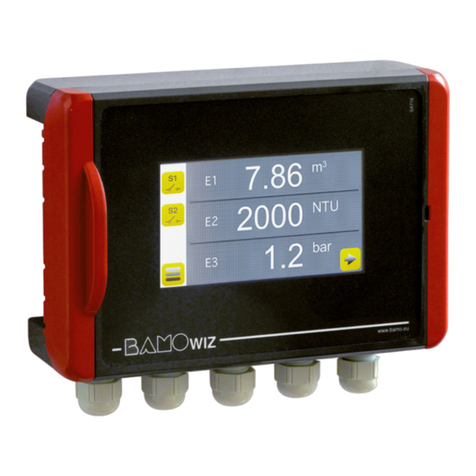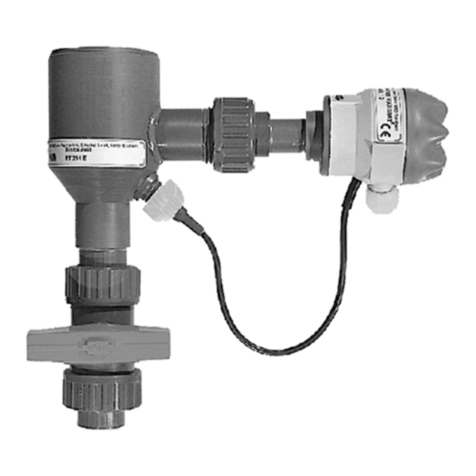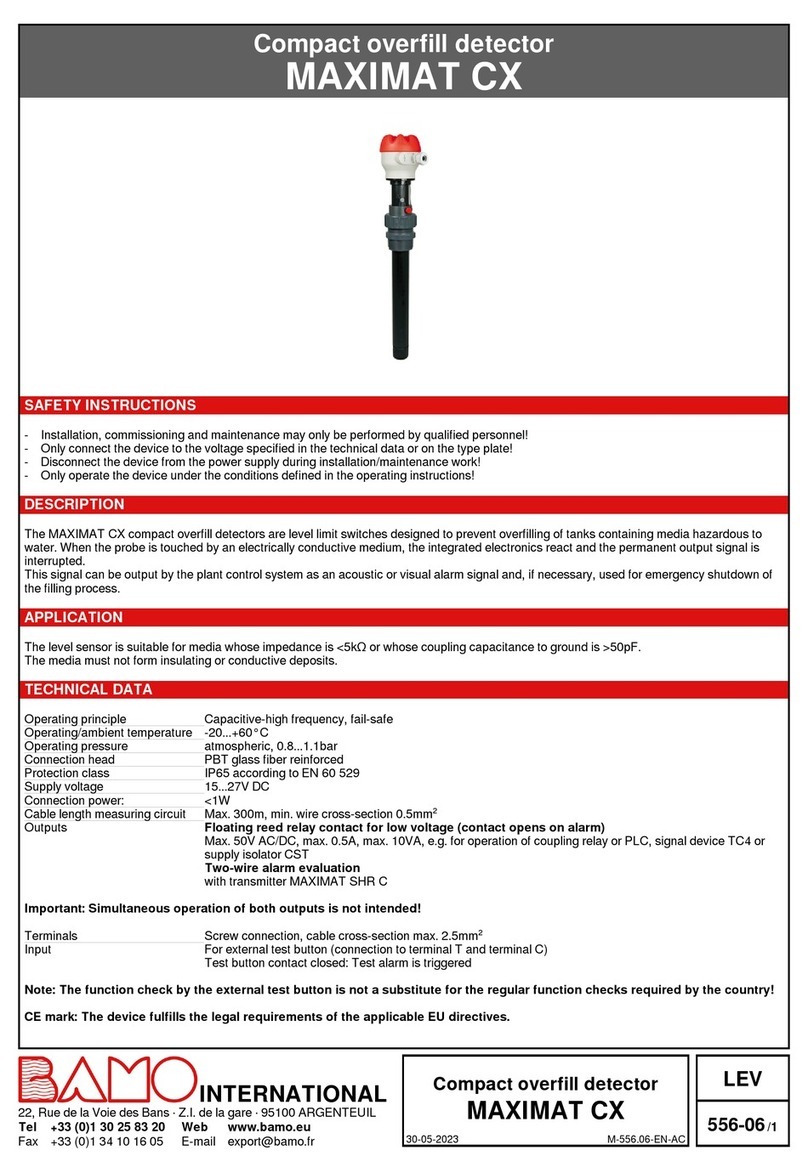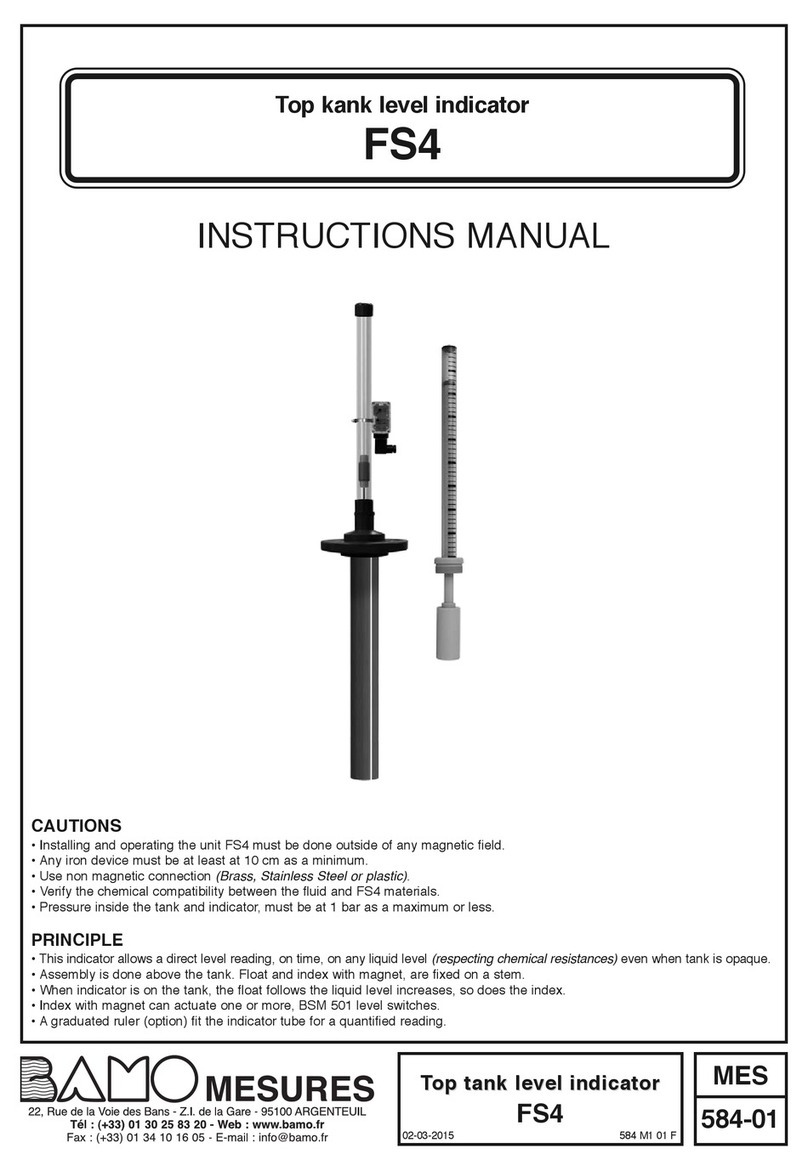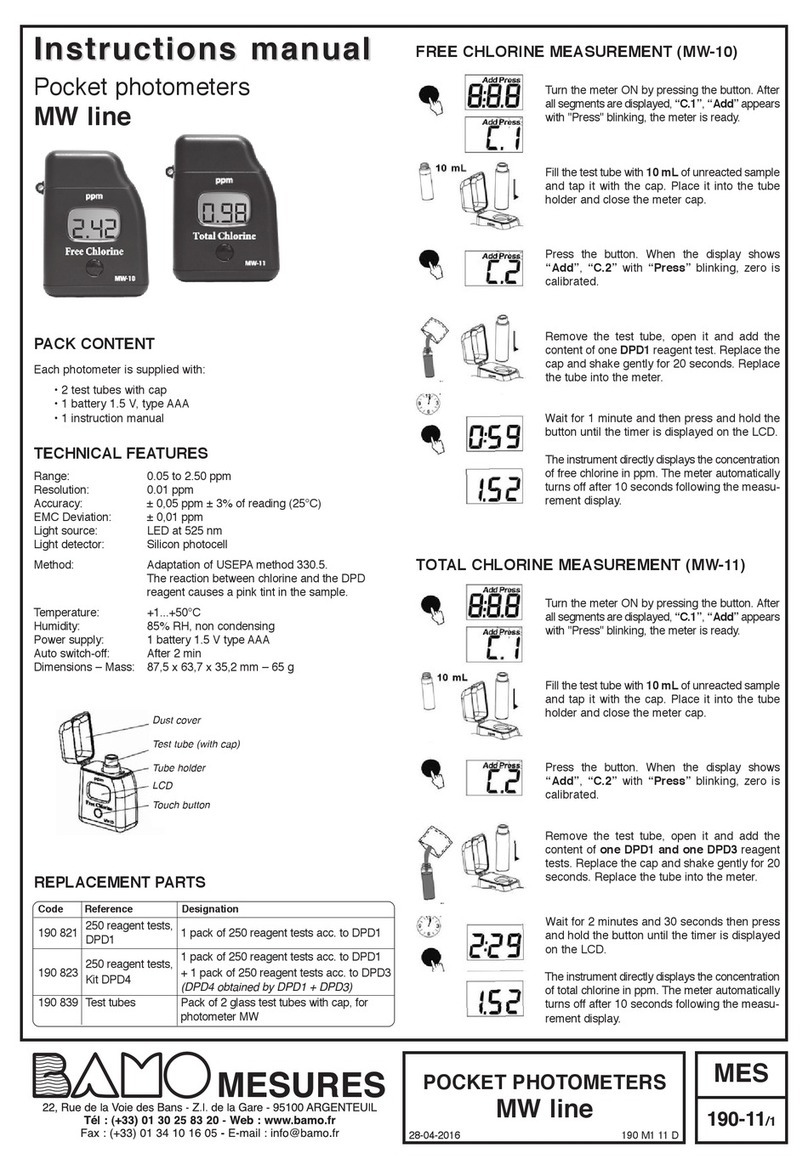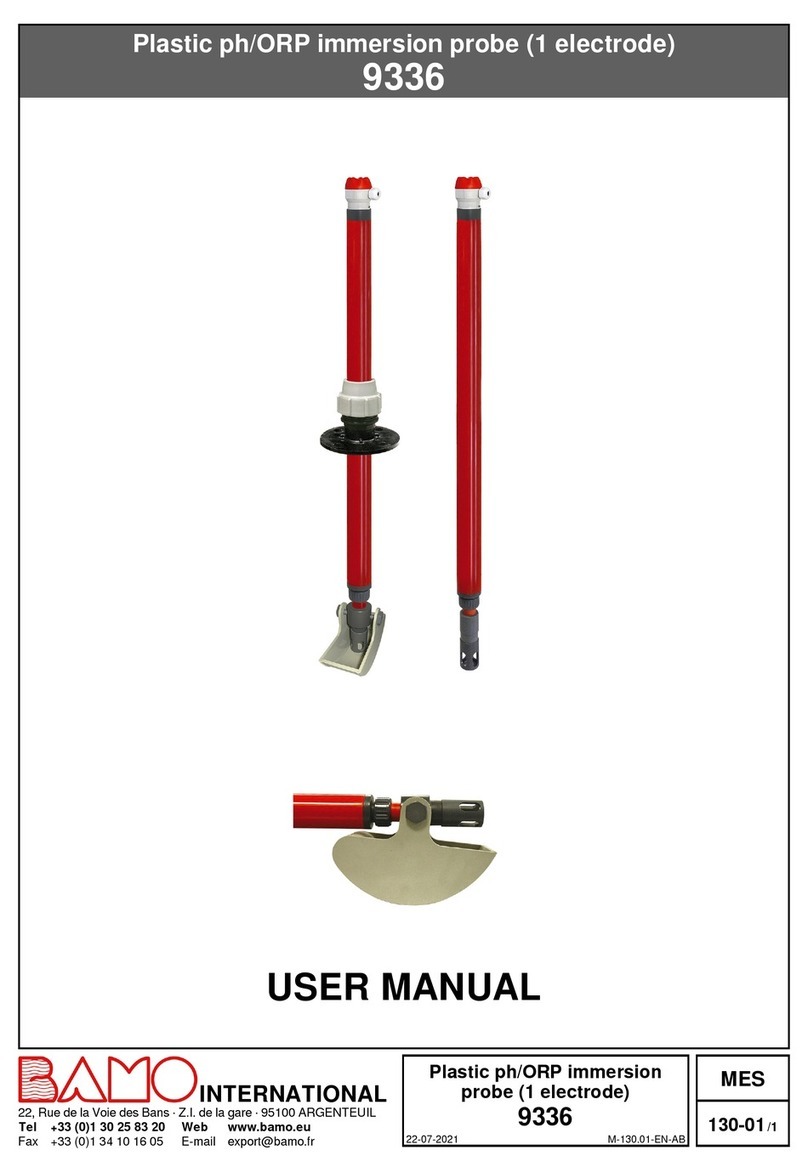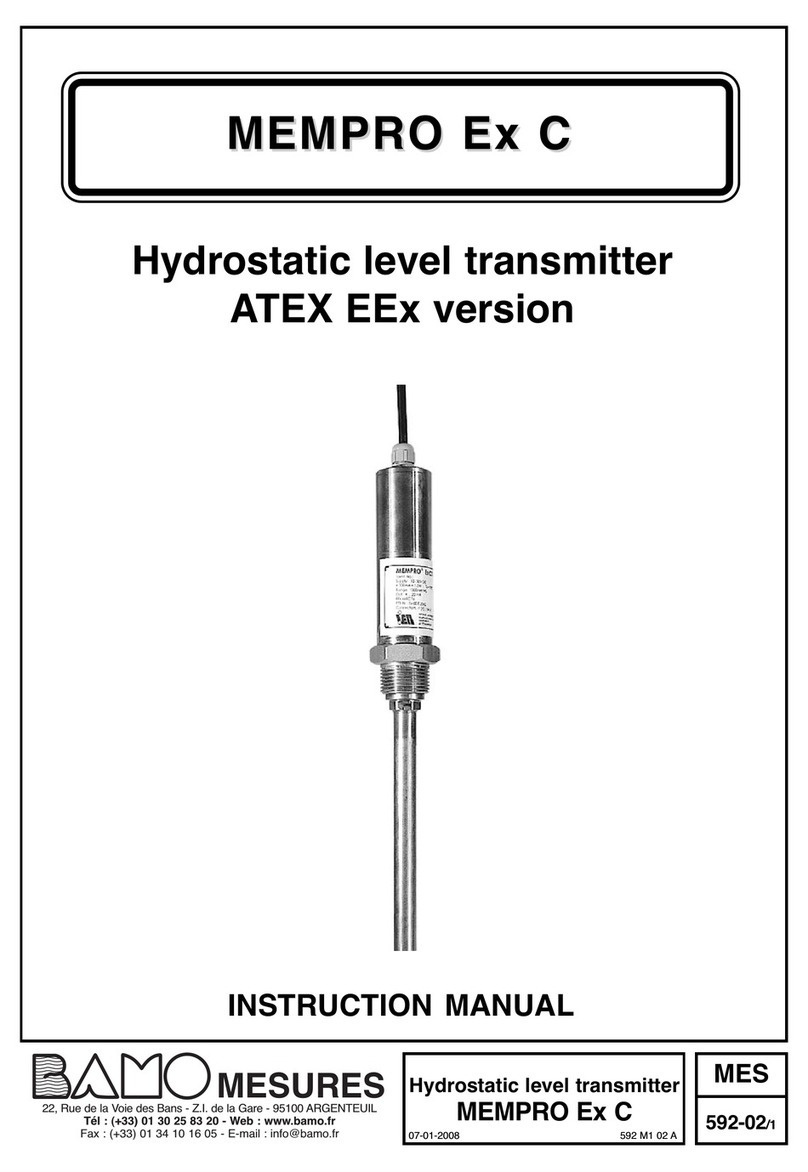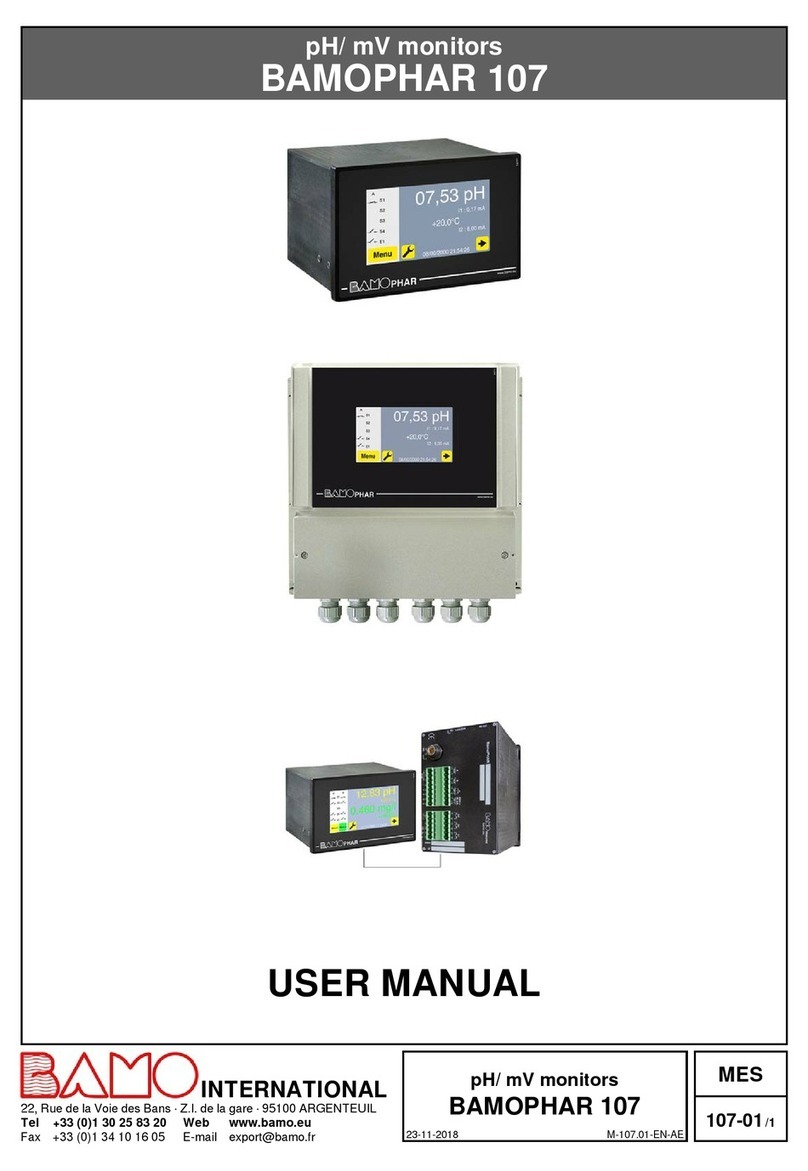
msa190-10
2010-12 page 7
Cleaning the Optics
Any build-up of dirt or deposits may interrupt light transmission and affect readings.
To clean the optics gently clean the internal surfaces of the optics with a soft, non-abrasive cloth. Do not use solvents. Deposits may be removed with a
slightly dampened cotton bud.
The photometer is fitted with long-life light sources and contains no user-serviceable components. If the instrument requires servicing or repair, this can
be arranged through our Technical Services Department.
Servicing and Warranty
Palintest Pooltest Photometers are guaranteed for a period of two years from the date of purchase, excluding accidental damage or damage caused by
unauthorised repair or misuse. Should repair be necessary, contact our Technical Services Department quoting the serial number. This guarantee does
not affect your statutory rights.
An instrument failure due to test cell contamination is not covered by the Palintest instrument warranty.
5 TROUBLESHOOTING
Chemistry Troubleshooting
It is very important to specify Palintest Photometer Grade tablets when ordering replacement reagents for this instrument. Using an
alternative grade of tablet may lead to a turbid sample which in turn leads to inaccurate results.
Chlorine:
Note that a too high chlorine level (>8 mg/L) can cause bleaching of the pink coloration formed in the DPD test and give a false negative or low result
(this doesn’t occur with DPD XF and XT reagents). If a colourless or weakly coloured test solution is obtained when chlorine is known to be present,
check for the possibility of bleaching by repeating the test on a sample diluted with chlorine-free water.
Very high levels of calcium hardness (>1000 mg/L as CaCO3) may lead to turbidity when performing the test. If this occurs, you need to add one EDTA
(AT 090) tablet to your sample prior to adding your DPD tablet.
Non-chlorine shock dosing treatments for swimming pools are widely used to support chlorine treated pools. Chemicals containing monopotassium
persulphate (MPS) are used to oxidise organic contaminants in the water and regenerate free chlorine from chloramines.
Typical products are Oxybrite, Oxysure and Purolyte Plus.
Excess MPS reacts in the DPD test. It does not affect the free chlorine result with DPD No 1, but raises the DPD No 3 reading, thus yielding a false high
result for combined chlorine. Unwary pool operators may add further shock dose at this point, and this further raises the false total chlorine result.
Palintest’s DPD Oxystop has been developed to prevent this problem.
The DPD Oxystop tablet should be added after the DPD No 1 Free Chlorine test result has been read and before the DPD No 3 tablet is added. The
tablet must be thoroughly crushed and mixed well into the solution, and allowed a one-minute stand before proceeding with the DPD No 3 tablet.
Thus, Oxystop suppresses the response from MPS and allow accurate measurements of free and total chlorine on non chlorine shock dosed pool
waters.
The DPD Oxystop tablet may also be used in exactly the same way with the DPD-XF and DPD-XT tablets.
pH:
Ionic strength, temperature and other water factors will have an effect on pH readings. This test has been calibrated for conditions most likely to be
encountered in a typical swimming pool.
The colour range of the phenol red test is yellow, through orange, to red. The formation of an intense purple coloration shows that the indicator has been
affected by high chlorine or bromine residuals. In such cases the result should be disregarded.
Cyanuric Acid:
The range of the cyanuric acid (CNA) test is 2 – 200 mg/L. Higher levels can be tested by first diluting the sample with mains or deionised water and
then applying the appropriate dilution factor. Palintest’s Dilution Tube (PT 512), which is available as an optional extra, should be used for the dilution.
